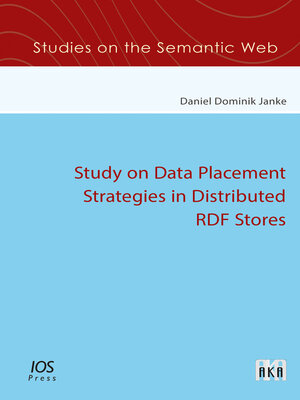Study on Data Placement Strategies in Distributed RDF Stores
ebook ∣ Studies on the Semantic Web
By D.D. Janke

Sign up to save your library
With an OverDrive account, you can save your favorite libraries for at-a-glance information about availability. Find out more about OverDrive accounts.
Find this title in Libby, the library reading app by OverDrive.



Search for a digital library with this title
Title found at these libraries:
| Library Name | Distance |
|---|---|
| Loading... |
The distributed setting of RDF stores in the cloud poses many challenges, including how to optimize data placement on the compute nodes to improve query performance. In this book, a novel benchmarking methodology is developed for data placement strategies; one that overcomes these limitations by using a data-placement-strategy-independent distributed RDF store to analyze the effect of the data placement strategies on query performance. Frequently used data placement strategies have been evaluated, and this evaluation challenges the commonly held belief that data placement strategies which emphasize local computation lead to faster query executions. Indeed, results indicate that queries with a high workload can be executed faster on hash-based data placement strategies than on, for example, minimal edge-cut covers. The analysis of additional measurements indicates that vertical parallelization (i.e., a well-distributed workload) may be more important than horizontal containment (i.e., minimal data transport) for efficient query processing. Two such data placement strategies are proposed: the first, found in the literature, is entitled overpartitioned minimal edge-cut cover, and the second is the newly developed molecule hash cover. Evaluation revealed a balanced query workload and a high horizontal containment, which lead to a high vertical parallelization. As a result, these strategies demonstrated better query performance than other frequently used data placement strategies. The book also tests the hypothesis that collocating small connected triple sets on the same compute node while balancing the amount of triples stored on the different compute nodes leads to a high vertical parallelization.







